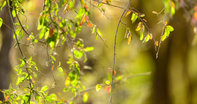
Name
Tamboti (Spirostachys Africana)Description
The tamboti tree is of medium height, and has characteristically dark and rough bark. It is a deciduous tree spotted by various colours with distinct growth increments. It exudes a milky latex which can irritate the skin and eyes.
Kudus browse on its leaves, causing hunters to be careful when dressing a carcass in areas where tamboti trees grow to prevent the ruminal contents of spoiling the edible kudu meat. When burnt for cooking food, the wood of the tamboti tree emits a smell which infuses the food with a strange taint.
The tamboti tree thereby protects itself against being exploitatively used by humans. The inner part of its trunk – its heartwood – is dark brown in colour marked with darker vertical stripes. It is a shiny, hard timber with a distinct smell sweeter than sandalwood. After being cut, this scent lasts in the wood for a long time and is used for furniture.
Tamboti Flowers
The tamboti tree blooms in September. Seeds the size of peas develop in three-lobed capsules, which fall to the litter of leaves below when it has matured in November. Under a cluster of tamboti trees, a certain rustling sound can be heard in the leaf litter. Small flicking movements of seeds can be spotted.
In the hot sun, these flicking movements will increase. This is due to small larva being inside the seeds, contorting in the heat and making the bean jump. This is the larva of the Emporia melanobasis – a small grey moth that lives off the seed while it is still green.